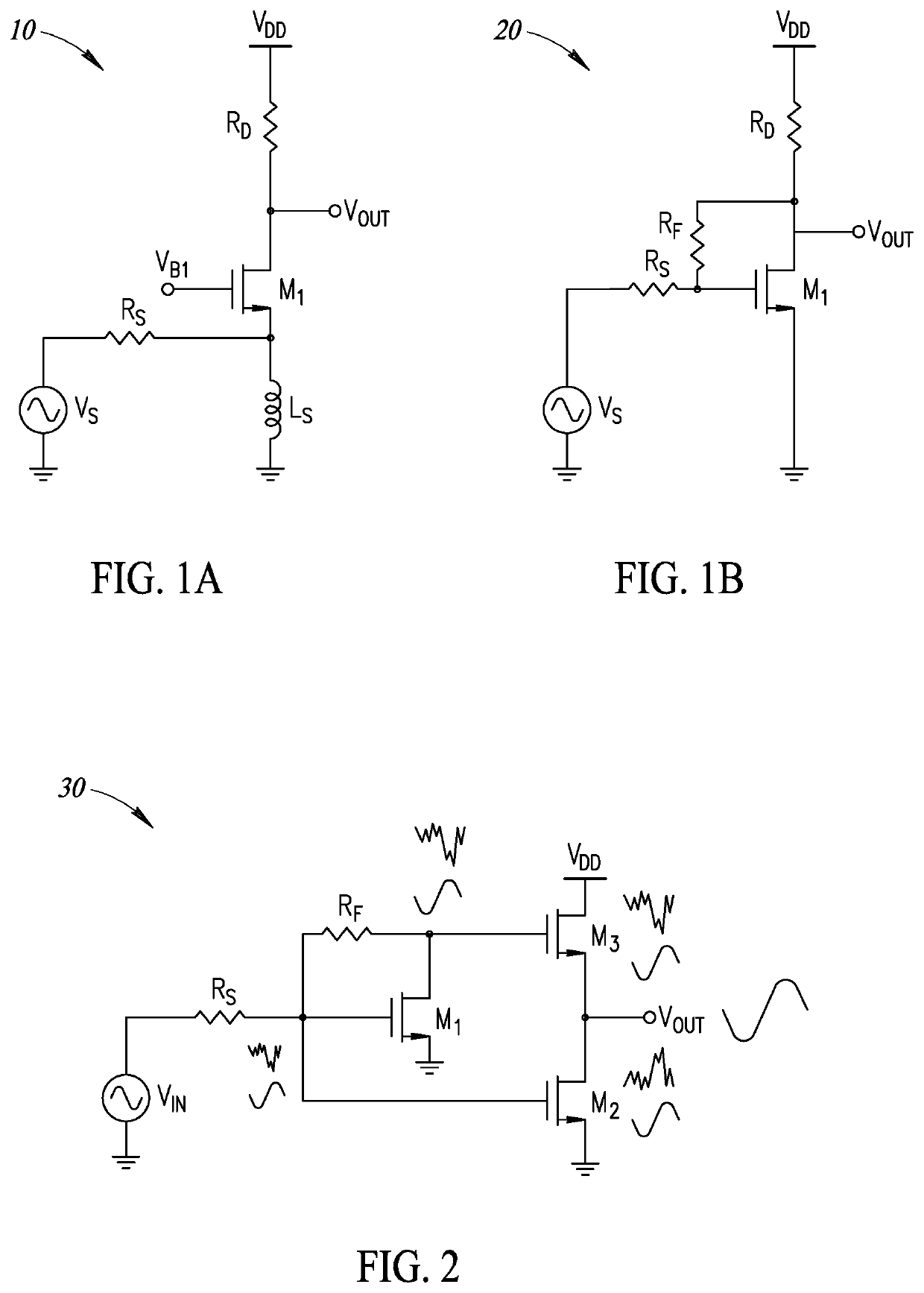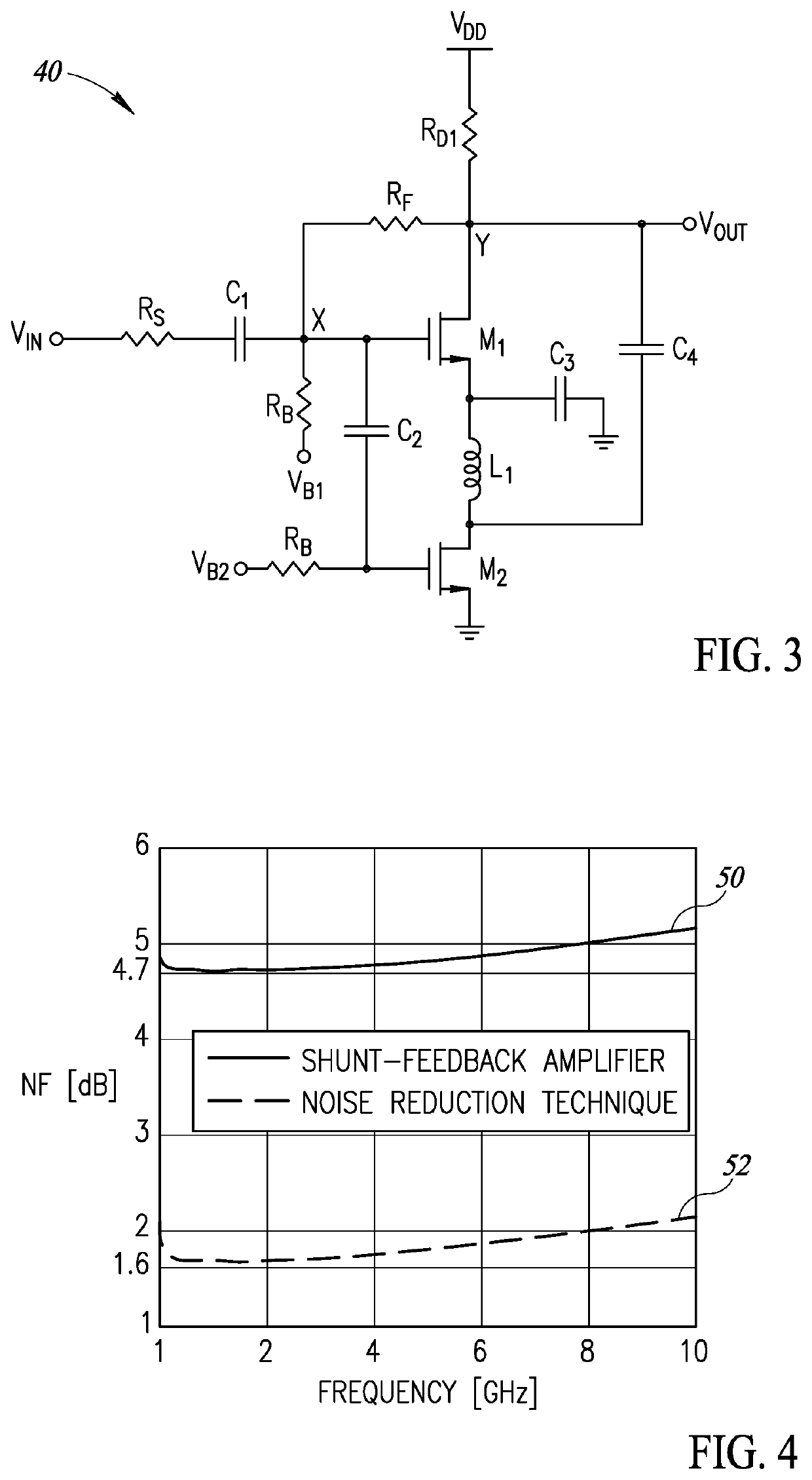Ultrawideband very low noise amplifier with noise reduction and current reuse
a very low noise, ultrawideband technology, applied in the direction of low noise amplifiers, amplifiers, amplifier modifications to reduce noise influence, etc., to achieve the effect of maintaining power consumption, improving noise figures (nf), and increasing the transconductance of cs transistors
- Summary
- Abstract
- Description
- Claims
- Application Information
AI Technical Summary
Benefits of technology
Problems solved by technology
Method used
Image
Examples
Embodiment Construction
[0041]To aid in understanding the operation of the noise reduction technique of the present invention, the basic idea of conventional noise cancellation is presented. Then, the noise reduction technique of the present invention is described.
[0042]Regarding conventional noise cancellation techniques, the most important noise source in CMOS transistors at radio frequencies is the channel thermal noise. This noise is modeled as a shunt current source between the transistor drain and source terminals. The goal of the designer is to minimize the amount of noise generated within each element to obtain a low NF.
[0043]An example conventional noise cancellation scheme is shown in FIG. 2. In operation, the noise current of the main transistor M1 flows through the feedback resistor RF to the gate of the matching amplifier and creates two noise voltages with the same phase but different amplitudes in nodes X and Y. On the other hand, the signal voltage at these nodes has opposite phase and diff...
PUM
 Login to View More
Login to View More Abstract
Description
Claims
Application Information
 Login to View More
Login to View More - R&D
- Intellectual Property
- Life Sciences
- Materials
- Tech Scout
- Unparalleled Data Quality
- Higher Quality Content
- 60% Fewer Hallucinations
Browse by: Latest US Patents, China's latest patents, Technical Efficacy Thesaurus, Application Domain, Technology Topic, Popular Technical Reports.
© 2025 PatSnap. All rights reserved.Legal|Privacy policy|Modern Slavery Act Transparency Statement|Sitemap|About US| Contact US: help@patsnap.com



